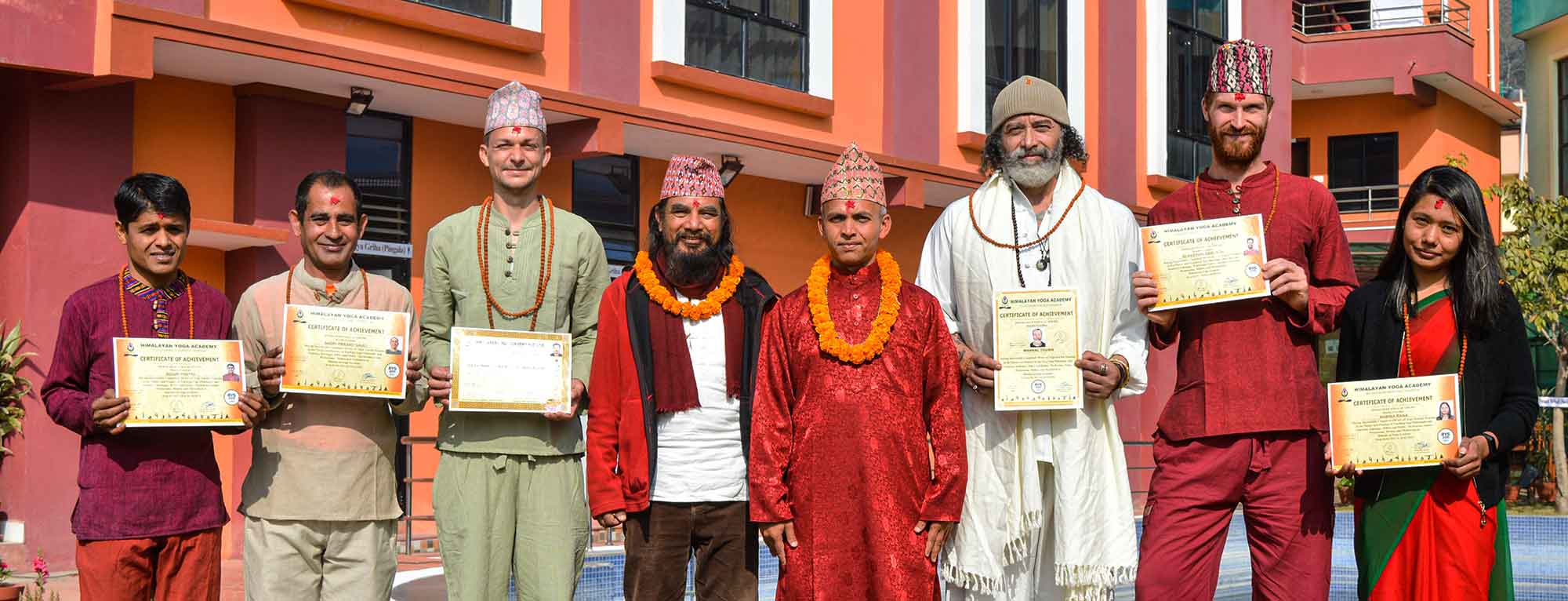
18 Feb 2021 HYN Himalayan Yoga Academy
General Concept
Yoga is, of course! Known today everywhere. In my 25 years of Yoga journey, I realized that people are thinking about Yoga as a challenge and competition and also sometimes asking me what eligibility is required for yoga sessions. Then usually I reply to them that if they are a beginner or are going to join the class for the first time, without any tension or problems they can join in a yoga session because Yoga is itself the union and science of happiness, not the physical training or also not challengeable games. But definitely, we do physical exercises and yogasanas for physical foundations, health, and purity which is the entry requirement for Yogic life. Everybody in beginning are beginner, so you may join with a free-of-mind motive to achieve a new life with new energy.
Need of Beginner’s Yoga:
I taught thousands of yoga lovers, practitioners, and even Instructors from all over the world, who are 8 to 80 years old. I mean everybody should know how to generalize or moderate the yogasana packages or whole yoga packages to all levels, of normal people or ill people. There are hundreds of patterns and variations for all as need and effort. For beginners, generally we should focus on short mantras, Sukshma Vyayama, easier forms of Asanas, Saral svas kriya (Easier Breath Acts), Long shavasana, and Yoga Nidra practice.
Our Yoga for Beginners guide was created specifically for you—to give you all the tips, guidelines, and recommendations you will need to start a successful yoga practice. To ensure your success, we highly recommend you read this entire page before attempting any yoga.
What Is Yoga ?
Literally, Yoga is a vast collection of spiritual techniques and practices aimed at integrating mind, body, and spirit to achieve a state of enlightenment or oneness with the universe. What is normally thought of as “yoga” in Modern Life is Hatha Yoga (Physical Yoga), one of the many paths of yoga. The different paths of yoga emphasize different approaches and techniques but ultimately lead to the same goal of unification and enlightenment.
Hatha Yoga attains the union of mind through a practice of shatkarma (internal cleansing), asanas (yoga postures), pranayama (yoga breathing), and mudra (body gestures) which makes it easy to enter into internal yoga. These physical practices are used to purify the body and cultivate prana (life-force energy). Modern Hatha Yoga does not emphasize many of these esoteric practices and instead focuses more on the physical yoga postures.
The Merits of Practicing Yoga
The advantages of yoga are almost endless! Practicing yoga helps build healthy virtues and good values, such as discipline, honesty, devotion, self-inquiry, mindfulness, and non-attachment. Yoga empowers you to make conscious choices toward living a healthier and fulfilling life.
Benefits of Yoga
- Improve and maintain the health of muscles, joints, and organs
- Improve flexibility, strength, stamina, mobility, range of motion, and balance
- Help heal common aches like back pain
- Keep your mind healthy and strong
- Boosts circulation
- Helps to improve digestion
- Improves posture
- Can connect us to others and make you feel more compassionate
- Reduce stress and promote relaxation
- Get a better night’s sleep
- Boost your immune system
- Increase happiness and well being and reduce depression
- Lose weight and change your body shape
- Prevent conditions such as diabetes, heart disease, and auto-immune disorders
Yoga Capsule
Regardless of what your goals or intentions are for starting the yoga packages, just the yoga poses themselves is a basic form of physical and mental exercise.
ShataKarma:
Jala Neti (Nasal Cleansing)
Sukshma Vyayama:
- Padanguli naman
- Goolf chakra
- Janu chakra
- Shroni chakra
- Kehuni naman
- Skanda chakra
- Greeva sanchalan
- Netra Kriya
Yogasana
Postures in Standing Position
- Tadasana
- Utkatasana
- Trikonasana
- Dhrubasana
Posture in Sitting Position
- Saral Ushtrasana
- Vajrasana
- Balasana
- Vakrasana
- Baddha Konasana
- Lord Vishnu Asana
Posture in Prone Position
- Makarasana
- Eka-pada –shalbhasana
- Bhujangasana
- Parvatasana
Posture in Supine Position
- Tanasana
- Saral Gudasana
- Uttanpadasana –
- Nabhidarshanasana
- Kandarasana
- Markatasana
- Shavasana
Swas Kriya
- Abdominal Breath
- Thoracic Breath
- Chandra Anuloma Viloma
- Surya Anuloma Viloma
- Bharamari Svas Kriya
Yoga Nidra
1. Physical preparation and relaxation in Shavasana – two rules: no movement & no sleep
2. Breathing relaxation – breath makes the link inside and outside the body, we try to balance
3. Environmental Awareness – feel nature, hear nature, and move your awareness sounds to sounds, even in distance, and may pick the sounds, then physical sceneries around you- e.g, jungle, gardens, temples, houses, buildings, your hall/ room, ceiling, 4 walls, floor, mat, then visualize your body on the mat, seems like in the mirror
5. Rotation of awareness throughout the body parts- the main body of Yoga Nidra by starting from toes or head, fingers, right, or Left sides, etc.
6. Getting back to breathing awareness – Inhale-Exhale breath, feel the In breath-and rise; Ex breath – and fall;
